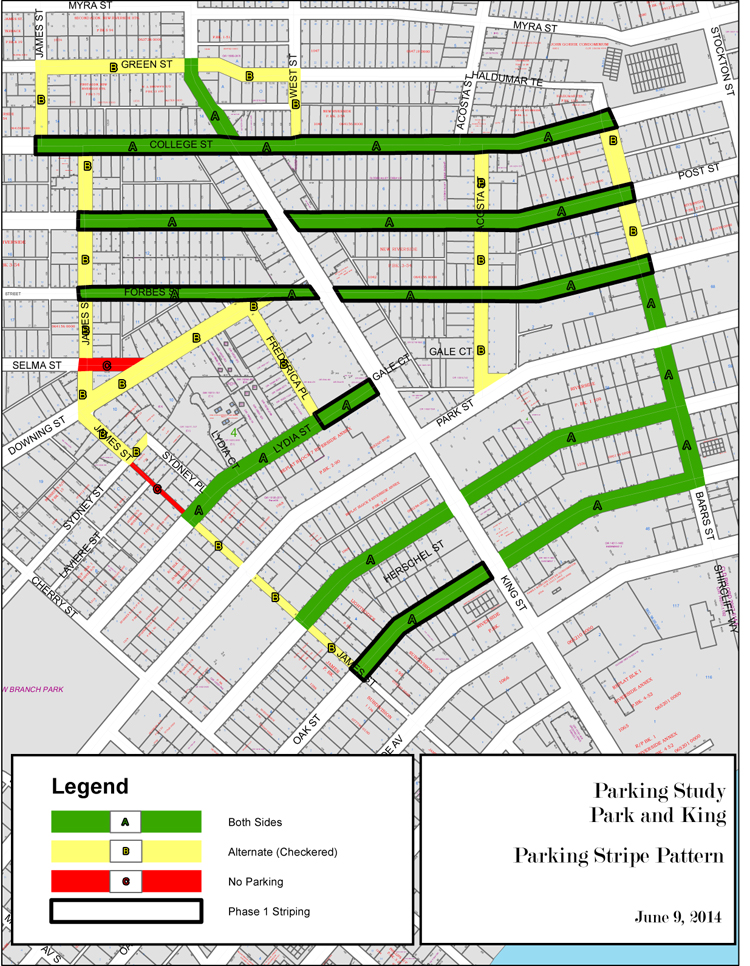Street striping bill doesn’t address lack of parking
Residents in the Park Avenue and King Street area and in the Shoppes of Avondale area may be wondering what has happened to the recommendations put forth by the Parking Study Steering Committee (PSSC) earlier this year. According to Kay Ehas, chair of the committee, the striping requires legislation before Public Works Department can proceed with the plan. “We’re finalizing the legislation now,” said Ehas last month.
The proposed ordinance – which has not yet been finalized for City Council review and approval – provides for “striping parallel parking spaces, including striping in a checkered (alternating) pattern along certain roadways to designate on-street parking.” The bill also seeks to reduce the speed limit of certain roadways from 30 miles to 20 miles per hour.
The parking study and formation of the PSSC were a result of the increase in parking space demands brought on by an increase of bars and restaurants in the Park & King and Avondale commercial areas. Members of the PSSC and the study consultant (Ghyabi & Associates) met with residents and business owners during public forums to discuss the study and subsequent recommendations by the steering committee.
The legislation, as proposed by the steering committee, would require striping on certain streets and leave open the option for more striping and traffic management in the future without further legislation. The striping plan would require the city to apply striping “to standards,” and remove a portion of available parking in front of homes in residential areas surrounding the two areas.
Residential parking would be further reduced on streets that were deemed too narrow for [simultaneous] two-way traffic flow. For example, a “checkered” striped parking scheme will allow parking on alternate sides of streets to “contribute to maintain slow speeds conducive to traffic, pedestrian and bicycle safety,” according to the proposed bill. This would also reduce the amount of available on-street parking.
Bike and pedestrian friendly streets
The working draft of the bill does not currently appear to address the issue about the lack of parking as much as it does to provide legislation for conversion of some streets in the Historic District to “context-sensitive streets,” which is a design concept for making streets more bicycle and pedestrian friendly. A few streets in Riverside and Avondale are extremely narrow and do pose a danger for emergency vehicles such as fire trucks or rescue vehicles.
Riverside Avenue between Talbot and Edgewood is an example of a section where on-street parking may not be permitted. Residents and visitors to homes on the targeted streets that do not have off-street parking (i.e., a driveway) may be forced to park a block or more away.
District 14 Councilman Jim Love, who is working with Riverside Avondale Preservation to address inadequate parking in the Historic District, expressed the desire that property owners have a voice about the proposed legislation. He wants to give residents the option to approve – or disapprove – the plan by using signed petitions.
“Every street and block is different and we should be careful to take the needs of the residents into considering what we do to improve the streets,” said Love. “Some streets have no parking problem and some, particularly those with multiple-unit housing, have no street parking.”
Legislation governing speed limits and where parking is or is not permitted on these streets is a positive move for bicyclists and pedestrians, and may provide relief for homeowners who have battled encroachment on their lawns and driveways.








